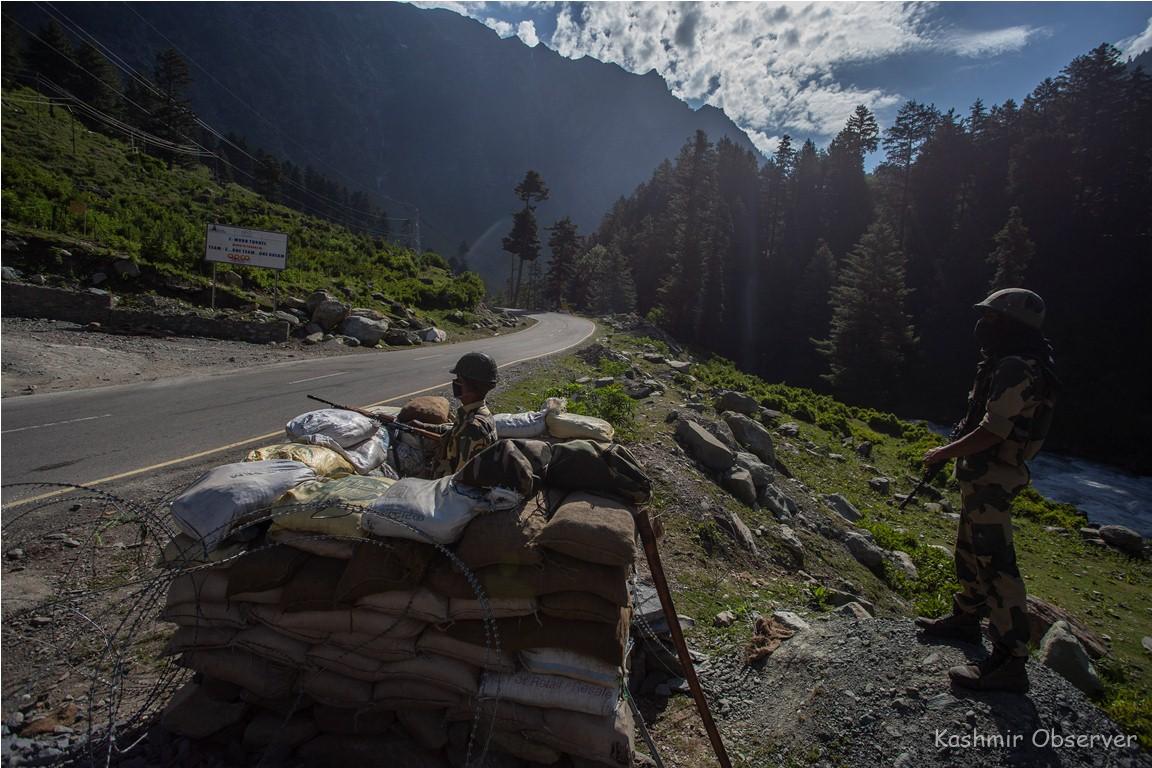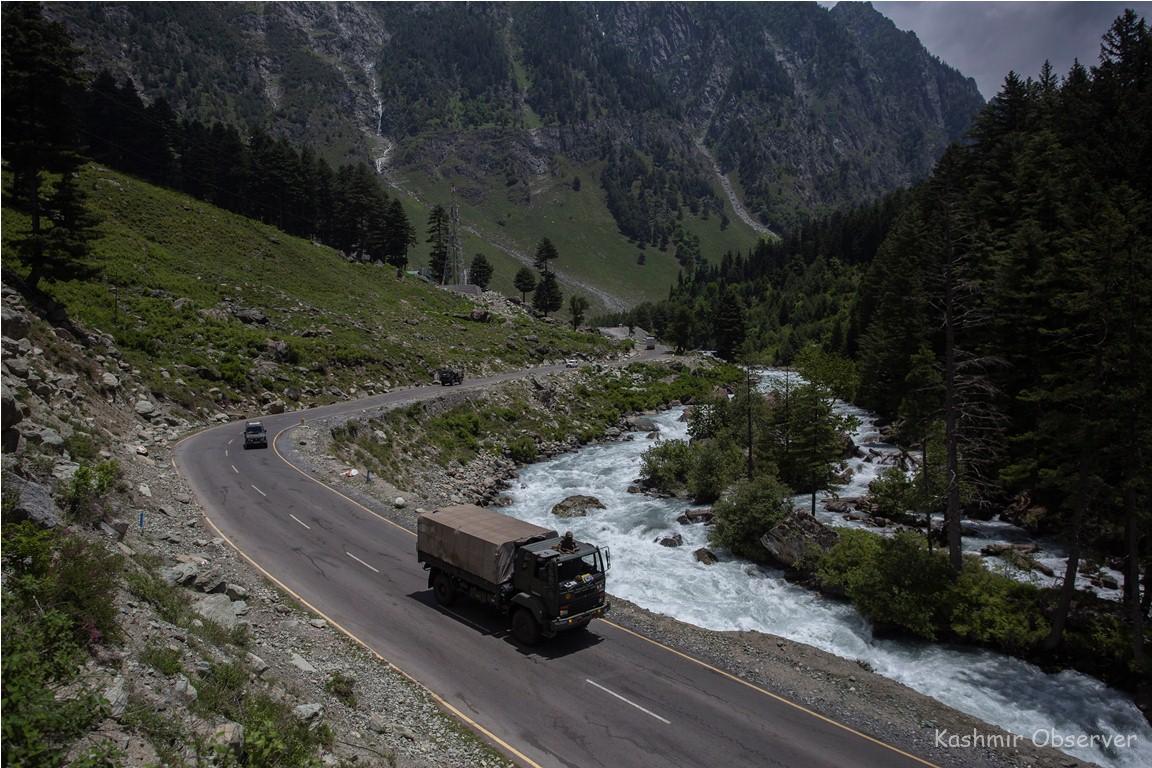
As Galwan Valley remains the Sino-India seething showdown site, many defence analysts and military veterans are exhorting New Delhi that the turf-war might further embolden the dragon if not pushed back.
By Mrinal Pathak
AKIN to speculative masses currently watching Sino-India standoff at the Line of Actual Control (LAC) in their living rooms, senior defence journalist and co-author of ‘Dragon On Our Doorstep’, Ghazala Wahab, is wondering: “What’s going to happen now?”
The thought, she said, troubling everybody is—“what’ll be the cost of de-escalation?”
However, she said, there’s no possibility of any further escalation.
“It has reached its peak,” Wahab, Executive Editor of Force Magazine, told Kashmir Observer. “The situation will further de-escalate, because neither side wants a war.”
Wahab is hopeful that the future concourse of de-escalations will emerge from a trilateral meet between India, Russia and China later this month.
Despite this sanguine defense view, many military veterans are throwing their weight behind the martial solution to keep the dragon at bay.
After he hung his military boots, Ashok Pathak, former Indian army brigadier, has been taking a keen interest in geo-politics of South Asia. The country which became epicenter of the COVID pandemic, he said, is on the warpath now to manage global perceptions.
Based on his expertise, the military veteran asserts that India won’t back down this time. He sees the “looming” international pressure mounting on Beijing now.
“It’s certain,” Brig. Pathak told Kashmir Observer, “that China is likely to face more international pressure after what it did.”
But New Delhi, he said, needs to be self-dependent.
“We’re very strong at LAC,” the ex-military officer continued. “We’ve possibly inflicted more casualties on that side than what has been reported.”
On the night of June 15, Indian Army and People’s Liberation Army of China entered into the deadly clash. The attack left 20 Indian Army men dead, while some source-based “intercepts” put the Chinese casualties at around 43.
Brig. Pathak said India will give a befitting reply to the Chinese, and push them back.
“That is certain,” he said. “And it won’t be for the first time. In 1967 also, we gave a bloody nose to the Chinese at Nathu La.”

Nathu La, along with Cho La, in northeastern part of India was the last clash site between the two forces that left hundreds of soldiers from both sides dead. Since then, the two sides have always resolved border disputes through diplomatic dialogues.
But Beijing now claims its sovereignty over the entire Galwan Valley—the site of the recent deadly nocturnal clash—named after a Ladakhi explorer, Ghulam Rasool Galwan.
The ongoing faceoff flared up despite Prime Minister Narendra Modi having an iconic swing ride at Sabarmati River Front in Ahmedabad with Chinese President Xi Jinping in recent past. Since then, there’ve been multiple formal and informal summits between the two leaders.
But now, some Beijing-based think tanks have linked New Delhi’s “unilateral move” of scrapping the special status of the former state of Jammu and Kashmir with the LAC standoff.
Standing eyeball to eyeball at multiple locations in eastern Ladakh for the past couple of months, the two most populous nations of the world have already fed war stores to an otherwise “unarmed” LAC.
The three major points of the faceoff between India and China are patrolling points 14-15 in the Galwan Valley, Hot Springs, and Finger-4 of Pangong Tso in Ladakh.
This time around, said Ajai Shukla, senior defence analyst and retired army colonel, the Chinese have intruded into new areas like Galwan, for the first time after 1962. “The numbers of intruders are unprecedented,” he said.
The faceoff started in early April when a scuffle broke out between the Indian and Chinese soldiers in Pangong Tso.
According to various reports, few Indian soldiers were taken by surprise when they spotted some Chinese soldiers patrolling the strategic Finger areas in Pangong Tso. The violent clash between the two sides left scores of soldiers heavily injured.
Ajai Shukla labelled the recent ambush as the brutality of Chinese soldiers and requested the government to come clean on the current situation.
In the last week of May, the two sides agreed on resolving the current dispute through dialogue. On June 6, 2020, both sides held talks at high military levels, but they could not result in any fruitful results.
While the talks were going on through military and diplomatic channels, the brutal clash on the night of June 15, 2020, further escalated the situation and led to many casualties on both sides.
According to the official statement released by the Indian Army, 3 Indian soldiers, including a commanding officer were killed during the violent faceoff and 17 succumbed to death, leading the total number of fatalities to 20. Neither the army nor the government gave any number on Chinese casualties.

New Delhi in a statement said that India has always resolved to maintain peace and tranquility with China along the Line of Actual Control, which stretches from Ladakh in the west, to Arunachal Pradesh in the eastern part of India.
The three Indian soldiers who recently lost their lives include Colonel Babu Santosh from Telangana who recently took control of the Army’s 16 Bihar unit.
A day before the vicious incident, Army Chief General Mukund Naravane told media that troops on both sides were disengaging and the process of de-escalation had begun.
While the army has not released any updated figure regarding the casualties, many experts suggest that the number of casualties can be significantly higher.
Prime Minister Narendra Modi on June 17, 2020 said that India had never provoked anyone and will protect its sovereignty. The statement came after the opposition demanded the government to come clean on the current situation.
Minister of External Affairs, S Jaishankar talked to his Chinese counterpart, Wang Yi, and conveyed, “What happened in Galwan was premeditated and planned action by China which was responsible for the sequence of events.”
Yi hit back saying Indian forces crossed the LAC and provoked the attack. Calling it a “risky act” of Indian Army, he asked India “to thoroughly investigate and punish those responsible”.
Later, MEA released a statement which stated that the clash with China would have a “serious impact” on the bilateral relationship.
The recent nocturnal attack was the first such incident in 45 years, where the loss of lives has been reported. The last time when casualties were reported was in 1975.
After 1975, there have been incidents of minor scuffles between the Indian and Chinese soldiers, but none of the incidents was fatal.
Since the Galwan Valley escalation, both sides have been trying to de-escalate the tension and ease off the already volatile situation. The two sides have been now engaged in the highest military level talks.
Earlier, the Chinese government said that Indian forces provoked PLA soldiers by crossing the LAC. India refuted the claim immediately, saying China was unilaterally trying to change the status quo.
For over decades, the border dispute has marred the bilateral ties between the two Asian giants. The two neighbours have maintained two different maps for the cold desert frontier. Analysts blame the India-China repeated talk failures for this cartographic conflict.
Meanwhile, terming the current situation as “a bad moon rising” on Sino-India relations, former Indian Foreign Secretary and Ambassador to China, Nirupama Menon Rao, said, “Chinese always present themselves as injured party and blame opposite side for the consequences.”
A dark hour like this with all the blood that has been shed is such a dreadful tragedy, Rao said. “Efforts made for normalization since 1976 have come to naught.”
Follow this link to join our WhatsApp group: Join Now
Be Part of Quality Journalism |
Quality journalism takes a lot of time, money and hard work to produce and despite all the hardships we still do it. Our reporters and editors are working overtime in Kashmir and beyond to cover what you care about, break big stories, and expose injustices that can change lives. Today more people are reading Kashmir Observer than ever, but only a handful are paying while advertising revenues are falling fast. |
| ACT NOW |
| MONTHLY | Rs 100 | |
| YEARLY | Rs 1000 | |
| LIFETIME | Rs 10000 | |











